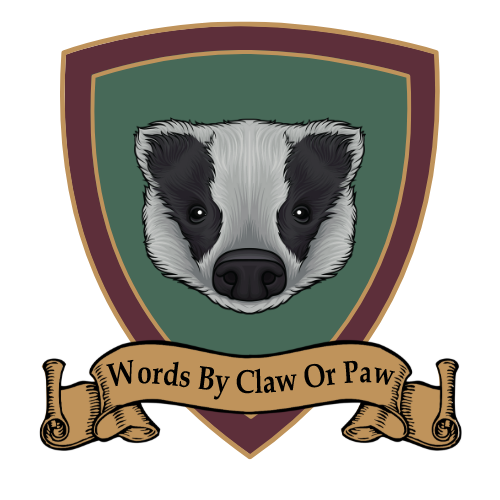Lapin Semaphore
Lapin Semaphore is an adaptation of modern semaphore that is expressed utilizing one of a bunny's major assets — their ears. It was developed by Sable Aradia in the six months leading up to The Third Word War to facilitate communication at a distance between the members of House Lapin. It can also often be used as a form of secret communication, since the general population does not understand semaphore, or would never expect the odd twitching of a rabbit's ears to be conveying coded messages.
Anyone can learn to understand Lapin Semaphore with training, but one must possess lagomorphic long and versatile ears in order to "speak" it; although substituting basic semaphore as practiced with hand-held signal flags can be used to convey messages to the Lapin bunnies instead.
Lapin Semaphore may be spoken as designed by Wererabbits, sentient rabbits such as familiars and spirit-animals, and Bunnykin. The Owsla have been specifically trained to understand it so that Queen Sable can communicate with them secretly if there is ever a need. The Prince Consort Erin Righ Lapin has also been taught how to understand it, and the Queen is in the process of teaching it to her siblings and children.
Phonology
The morphemes (ear shapes) of Lapin Semaphore are its "phonology." See the sidebar for a detailed breakdown.
Morphology
Semaphore is a telegraphy system used to convey information at a distance with visual signals. Information is encoded by the position of the flags, paddles, rods, or in this case, ears; it is read when the flags or other devices are in a fixed position. The positioning of the flags in semaphore may be thought of as hands on a clock from the perspective of the receiver. Different positions on the "clock" indicate different letters or numbers in combination with one another, and the positions of both hands form the letter or number. A sender comes back to center between each letter or number or signal.
Lapin Semaphore imitates the positioning of semaphore flags by manipulating lagomorph ears to resemble the shapes they create. While this cannot be precisely accurate, especially when it comes to letters and numbers that involve positioning across and in front of the body, rabbit ears can make enough of an approximation that the intended signal can be clearly understood.
Syntax
In semaphore, words and numbers are spelled by positioning of the arms and the flags (or other items) they hold. Because the purpose is to communicate messages quickly, unnecessary prepositions and elaborate context are ignored. Messages might be expressed as something like, "Undead approaching," followed by position, heading, and the estimated size of the Horde in question.
In Lapin Semaphore, the positioning of flags is simulated by the positioning of the ears. They are angled and folded to form similar positions to the traditional semaphore letters.
When a signaler wishes to begin a message, they bring both ears up and down in unison once or twice to get the attention of the receiver. This sign is also used when the signaler has made an error and wishes to alert the receiver to the mistake.
The signaler waits for the "ready to receive" signal from the receiver; which means the receiver raises both ears vertically above their head and sits up on their haunches, like rabbits do when alert in the wild. If in human form, they raise their arms as well as their ears vertically above their head. They then relax into the "ready" position, which is simply both ears being vertical. This is also used when a wererabbit is in mostly-human form for the "ready to receive" position when a wererabbit is trying to be discrete.
This "ready" position has been significantly modified from the traditional semaphore "ready" position, which is both arms forward and down with the flags crossed over each other but not the arms or wrists. In bunny form, this is only possible to imitate if the ear-tips are covering both eyes -- and obviously, someone who can't see is not in a "ready" position to receive visual messages.
Unlike in traditional semaphore, there is an "end message" position as well, which is curling both ears down and in front of the face, just beneath the eyes. This was deemed a necessary addition because of rabbit twitch instincts, as well as a need to counter-stretch against the typically rigid ear positioning.
Phonetics
Semaphore, in and of itself, has no phonetics since it is not a verbal language.
WIP
Streamer
Missing
Status: Location Unknown
Deceased
Status: Deceased Character
Retired
Status: Retired Character or Article















































Well, this was unexpected :D I love how you used Hero Forge for the dictionary in such a clever way, I would have never thought of using it for a sign language! When describing sign languages, "phonology" usually refers to the different hand shapes and movements that are present in the language, and that make up the morphemes or signs of the language. Or in this case, it could be the different ear shapes and locations that are allowed.
Ooh, neat! You learn something new everyday! Thanks for the info. I guess I should probably go back and delete that line, then, because otherwise I'll end up having to put all the graphics in that box and that would count as a major edit, wouldn't it? But neat, I did not know that the morphemes of a sign language were considered "phonology." Very cool! I appreciate the tip!
There we go. Made an edit. Thanks! And I freely admit I was giggling the whole time I was playing with the ears in HeroForge. I think it took me about 4 hours. Thanks for the kind words.
Morphemes and phonemes are still not the same thing. A "phoneme" could be something like "ear in up position" or "ear in bent position", or for a real sign language example, it can be place of articulation (at the chest, lower head or forhead?), hand shape (one finger straight, bunny ears, closed fist?), movement (left to right, right to left, in circles?), orientation (palm towards the chest or away?) etc. Then the combination of these phonemes make up the full signs or morphemes. For example, hand in pointing position + on the forhead + palm towards the speaker + movement back and forth makes up the Finnish sign language sign "to remember": https://suvi.viittomat.net/wordsearch.php?a_id=547&word_search=ajatella&offset=0&sssf=0&mpw=1 This dictionary is a nice example, because I think the small pictures on the top represent the individual phonemes! Anyway, the key difference is that hand in pointing position itself doesn't mean anything, without the place of signing and movement. Thus it's not a morpheme. Anyway, I'm by no means a speaker, just took a sign language course a couple years back, so I might be getting something confused as well. And funnily enough, just last night I had a dream of being the only non-signer in a room full of sign language speakers, and getting confused :D Section 2.1 of this article could be helpful: https://oxfordre.com/linguistics/display/10.1093/acrefore/9780199384655.001.0001/acrefore-9780199384655-e-117;jsessionid=20779D9C5B6E12906C0F5640AD42F61C